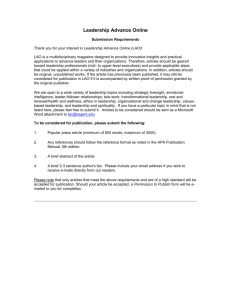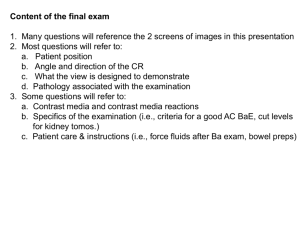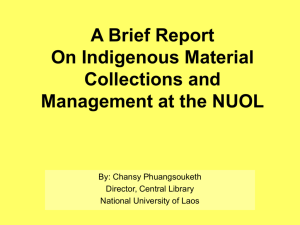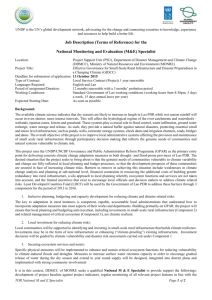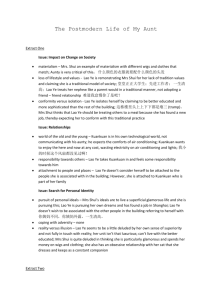is successful coronary sinus lead placement
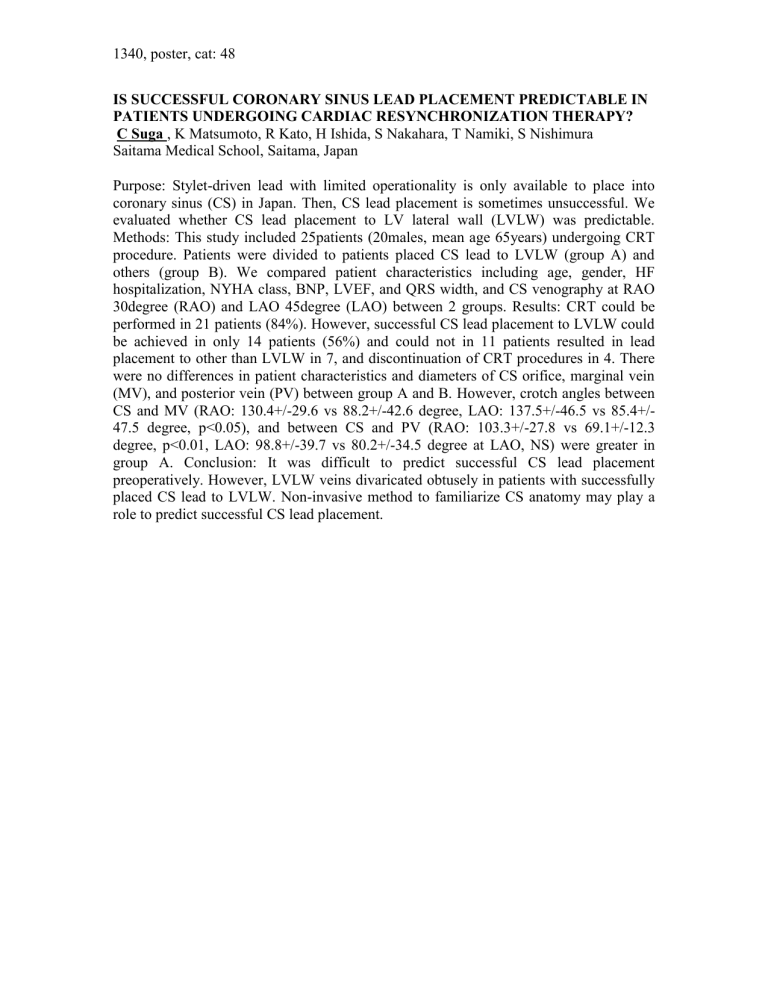
1340, poster, cat: 48
IS SUCCESSFUL CORONARY SINUS LEAD PLACEMENT PREDICTABLE IN
PATIENTS UNDERGOING CARDIAC RESYNCHRONIZATION THERAPY?
C Suga , K Matsumoto, R Kato, H Ishida, S Nakahara, T Namiki, S Nishimura
Saitama Medical School, Saitama, Japan
Purpose: Stylet-driven lead with limited operationality is only available to place into coronary sinus (CS) in Japan. Then, CS lead placement is sometimes unsuccessful. We evaluated whether CS lead placement to LV lateral wall (LVLW) was predictable.
Methods: This study included 25patients (20males, mean age 65years) undergoing CRT procedure. Patients were divided to patients placed CS lead to LVLW (group A) and others (group B). We compared patient characteristics including age, gender, HF hospitalization, NYHA class, BNP, LVEF, and QRS width, and CS venography at RAO
30degree (RAO) and LAO 45degree (LAO) between 2 groups. Results: CRT could be performed in 21 patients (84%). However, successful CS lead placement to LVLW could be achieved in only 14 patients (56%) and could not in 11 patients resulted in lead placement to other than LVLW in 7, and discontinuation of CRT procedures in 4. There were no differences in patient characteristics and diameters of CS orifice, marginal vein
(MV), and posterior vein (PV) between group A and B. However, crotch angles between
CS and MV (RAO: 130.4+/-29.6 vs 88.2+/-42.6 degree, LAO: 137.5+/-46.5 vs 85.4+/-
47.5 degree, p<0.05), and between CS and PV (RAO: 103.3+/-27.8 vs 69.1+/-12.3 degree, p<0.01, LAO: 98.8+/-39.7 vs 80.2+/-34.5 degree at LAO, NS) were greater in group A. Conclusion: It was difficult to predict successful CS lead placement preoperatively. However, LVLW veins divaricated obtusely in patients with successfully placed CS lead to LVLW. Non-invasive method to familiarize CS anatomy may play a role to predict successful CS lead placement.

